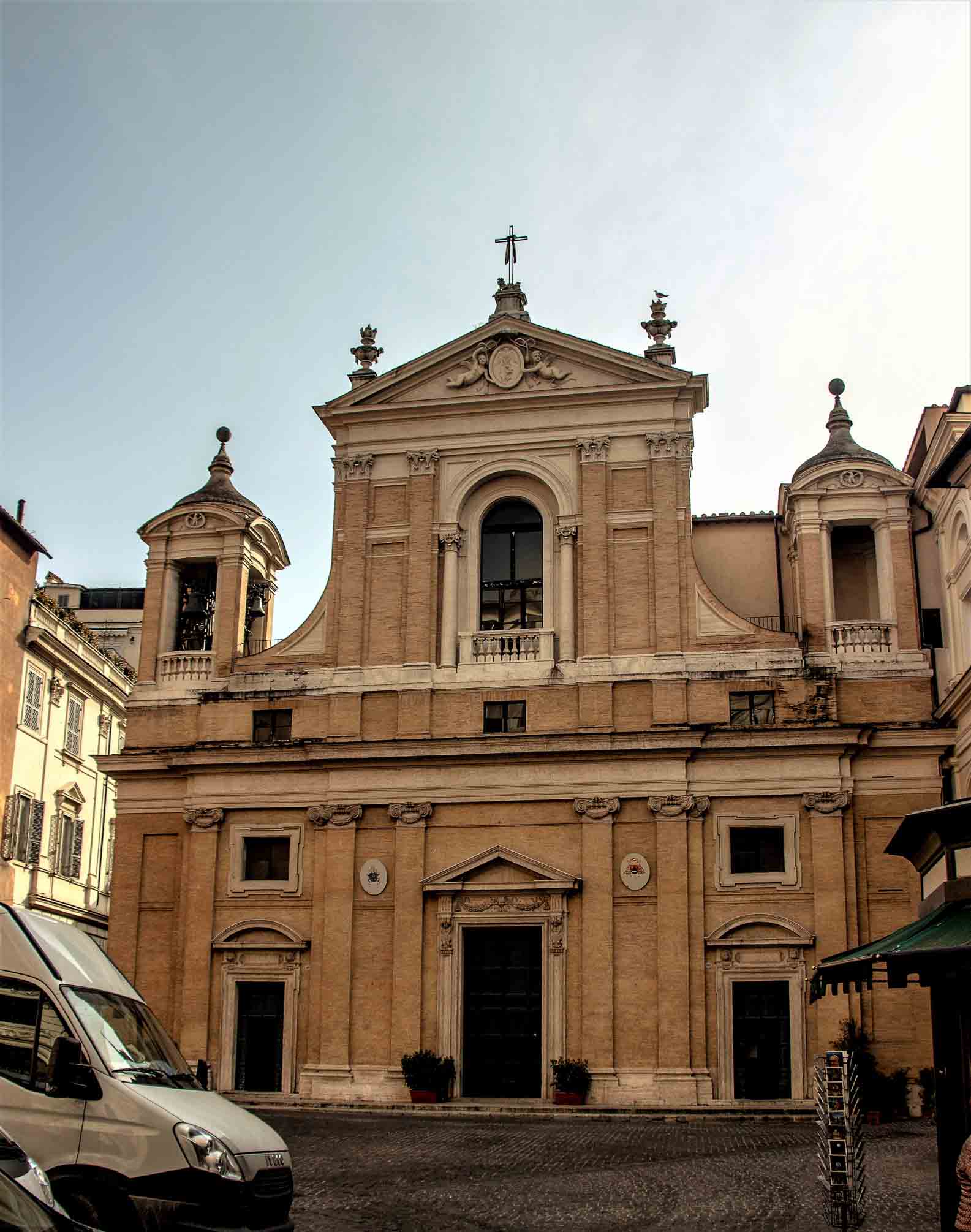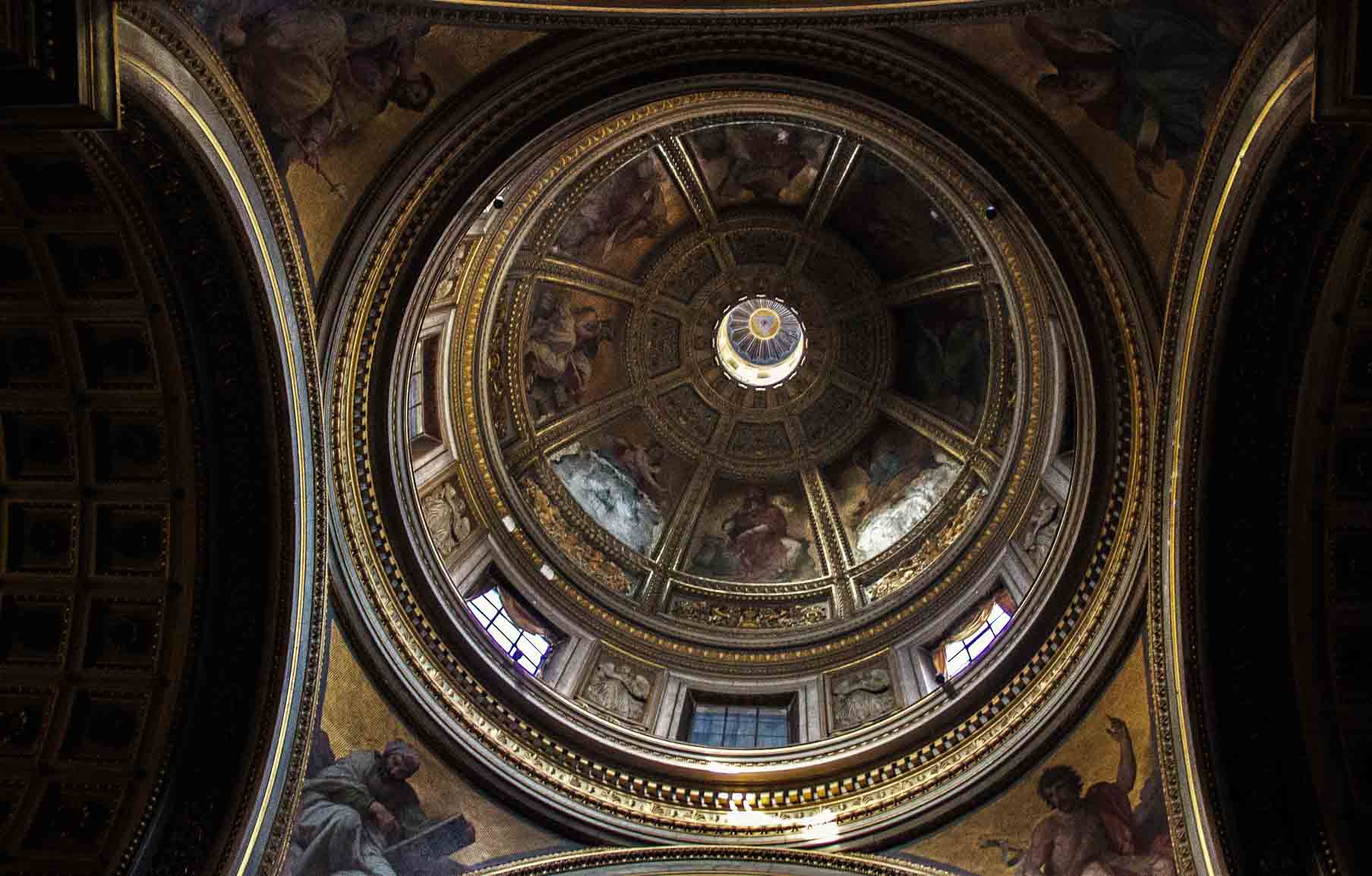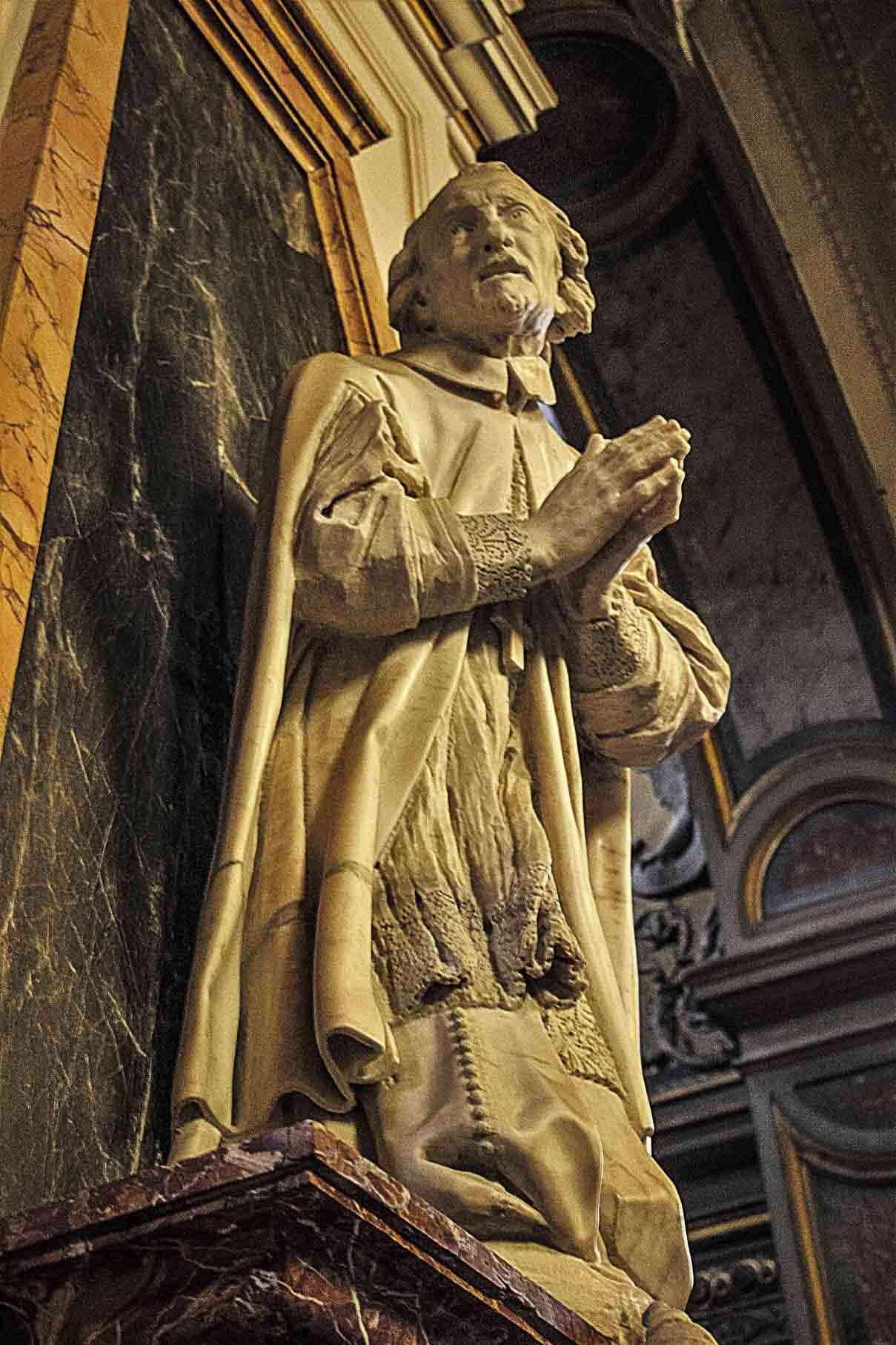
BUDOWLE & OBIEKTY Churches and chapels
Church of Santa Maria in Aquiro – following the imitators and continuators of Caravaggio
The paintings, illuminated with light from above, had to be thought-out in such a way as to have the light fall onto them at the right time of the day, also taking into account the angle they were looked at. In addition, there was the accompanying decoration, meaning the appropriate frames adorned with ornaments. All this constituted unequaled value of a specific work of art, which when transferred to a museum and illuminated with artificial light loses its initial aura. Here we can experience this aura in full.

As with many churches in Rome, this one boasts a long history, numerous reconstructions and modernizations. The first church was erected here as early as the beginning of the V century, while its founder was a certain Cyrus (in Latin Quirus), with whom its dedication is connected. Three centuries later, during the pontificate of Gregory III, another church was built, to then undergo complete reconstruction in 1590. This occurred due to Cardinal Antonio Maria Salviati, who employed the architect Francesco da Volterra for this purpose. The dignified and devoted to the cause of charity cardinal, as well as the architect, are known to us for their reconstruction of another Roman church – found at via del Corso, the San Giacomo in Augusta. Prior to the aforementioned XVI-century reconstruction, at the initiative of Ignatius of Loyola, an organization for the support of orphans was created here, which established an orphanage and a hospital in the monastery built next-door. Around 1591 in the building adjacent to the church, the Collegio Salviati was established, an institution of higher education, whose aim it was to educate boys (the aforementioned orphans), which was also founded by the cardinal.
Unfortunately the death of the founder in 1602 caused works on the church to be halted. They were not picked up again until the end of the XVII century, when they were finalized.
The church façade, whose designer was Carlo Maderno, the very same, who created the façade of St. Peter’s Basilica (San Pietro in Vaticano), is a two-story structure enriched with pilasters. Its pediment is adorned by two urns with sunrays, however they are not the ones that determine its uniqueness, but rather the two bell towers flanking it. As was often the case, the façade was completed last: a lack of funds moved its finalization, similarly to both bell towers, until the year 1774.

Unfortunately, a fire in 1845 nearly completely destroyed the church interior. The new furnishings are a work of XIX-century artists and are a reference to the fashionable at that time Neo-Mannerism with traces of Renaissance, readily supplemented with ornaments of rose windows, garlands, coffers, candelabra ornaments, or oeils-de-boeuf. The exquisite decorations, including paintings on the vault or the pillars of the main nave, depicting Fathers of the Church are the work of Cesare Mariani (1866). The whole interior seems to be pretty standard. The three-nave basilica with a shallow transept opens up on both sides of the side naves onto chapels (three on each side). An extensive dome rises at the cross-section of the transept and the main nave.
Only few objects remain from the initial XVII-century interior, and these are the ones that deserve special attention.

However, perhaps the greatest and definitely the oldest of the church’s treasures is difficult to notice. This is a small painting placed in the main altar Madonna with Child and St. Stephen (XIV century) completed by a painter from the circle of the famous Pietro Cavallini. It was moved to the church side chapel, after the burning of the main altar.
Może zainteresuje Cię również
Carlo Maderno (1556–1629) – a sought-after, hard-working and talented architect
Zgodnie z art. 13 ust. 1 i ust. 2 rozporządzenia Parlamentu Europejskiego i Rady (UE) 2016/679 z 27 kwietnia 2016 r. w sprawie ochrony osób fizycznych w związku z przetwarzaniem danych osobowych i w sprawie swobodnego przepływu takich danych oraz uchylenia dyrektywy 95/46/WE (RODO), informujemy, że Administratorem Pani/Pana danych osobowych jest firma: Econ-sk GmbH, Billbrookdeich 103, 22113 Hamburg, Niemcy
Przetwarzanie Pani/Pana danych osobowych będzie się odbywać na podstawie art. 6 RODO i w celu marketingowym Administrator powołuje się na prawnie uzasadniony interes, którym jest zbieranie danych statystycznych i analizowanie ruchu na stronie internetowej. Podanie danych osobowych na stronie internetowej http://roma-nonpertutti.com/ jest dobrowolne.